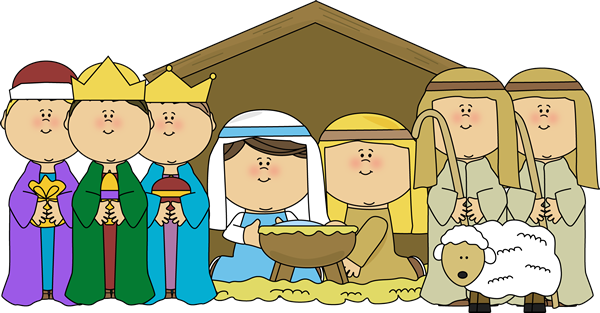Ret-conning the Nativity

Once upon a time, there was a children's novel entitled The Hobbit. It was a whimsical fantasy adventure about a small person, a hobbit, recruited by other small people, dwarves, and one tall person, a wizard, to go on a quest for a lost treasure. Along the way, there were battles with trolls, orcs, goblins, giant spiders and, eventually, a dragon. At the conclusion of this fantasy adventure was an all too realistic war for the treasure. And then the hobbit returned home.
The novel works perfectly well as a self-contained work of fiction. The author, JRR Tolkien, drew on a much larger work, the history of Middle Earth, a realm he spent his entire life creating. The Hobbit and The Lord of the Rings are all that he ever published from this work, but since his death in 1973 his family has issued volume upon volume of "unfinished tales," gleaned from the mountains of backstory material he had written but never submitted. I've read some of this stuff, and frankly, I can see why he never published it. It's of interest to Tolkien scholars, but none of it is written in the vivid prose of the books known and loved by so many.
Let's go back to The Hobbit. As I said above, it's a stand-alone success. It needs nothing else to complete it. At some point, Tolkien picked a minor element in that first novel, the magic ring of invisibility, and invested it with far more import, ultimately making its possession and destruction the central conflict of The Lord of the Rings. There were a few attempts to put these novels on screen, but none worked--the technology just didn't exist--until Peter Jackson's version appeared a decade ago. To my mind, his filmed trilogy succeeds magnificently in capturing and, at times, transcending its source material, and stands as one of the greatest accomplishments in the history of cinema. It also rocketed him from status a minor director of exploitation films to the august company of Spielberg, Scorsese, and Coppola. It was just a matter of time until he turned his attention to completing the canon by filming The Hobbit.
And now we enter the realm of ret-con, or retroactive continuity. It's a term that is used frequently by fans of science fiction, fantasy, and comics. Any fictional world that exists for long enough to experience some expansion will create continuity errors, and with them, the temptation to go back and "correct" the earlier works in the series. Thus, every release of the original Star Wars trilogy--which almost from the beginning were considered to be the middle of a larger work--has been modified in some way from what I first saw in theaters in 1977, 1980, and 1983. George Lucas can't help himself: the technology exists to enhance the special effects, so why not use it? And then there's that unused footage lying around which, when doctored with some digital imagery, can beef up Han Solo's back story, even if in the process it creates a redundancy, so why not? Oh, and the emperor's holographic image in Episode V is played by a different actor than the emperor of Episode VI, so why not fix that, too?
The Hobbit in its original form was never intended to be a prequel. In its cinematic form, which will in the end sprawl over three long movies for a butt-numbing total of almost nine hours' viewing time, Peter Jackson is going to great extremes to make sure we know what will follow. He's added subplots, created new characters, added in characters that should appear only in the trilogy to the prequel. The result is far more epic and complex than the simple, straightforward children's novel; and after re-watching the first part (I'll see part two sometime this week, health permitting), I find much of that complexity unnecessary. Why can't these two great stories just be permitted to exist on their own merits?
Because our brains won't let them. We may know cognitively that these stories are fine by themselves, that they need have nothing to do with each other save a few characters and a ring, but our brains insist on making connections and drawing out the implications of those connections. And that, finally, is what brings us back to the title of this essay, and its place within my Christmas series.
Anyone who's spent much time in church knows there are two different stories of the birth of Jesus. Both mention Bethlehem, Mary, and Joseph; apart from that, they have little in common. That's because they're written by completely different authors who probably had no idea of each other's version of the story, were writing for different communities, and were using the story for different reasons. In a nutshell, Matthew's story uses the Nativity to establish Jesus as the new Moses who will take the Torah to the Gentiles, while Luke's Nativity is about God's preferential option for the poor. Now, if we could just leave it at that--two different stories with different purposes told to different audiences that just happen to be collected in the same anthology--we'd be fine.
But, of course, we can't, and the reason is this: of all the reasons for ret-conning old texts, none rivals the belief that those texts are The Inerrant Word of God.
It's quite a pickle, this notion of inerrancy. It's a late arrival on the scene. For thousands of years, the Hebrew, Greek, and (yes, there are a few) Aramaic scriptures were treated as what they are: a collection of diverse writings about the spiritual experiences of ancient people whose ideas about religion were evolving over time. Select passages from these writings were frequently pulled out to support an argument, and the stories they told became the foundational history for the people who read them, but overall, few knew the whole work well enough to be concerned with contradictions in the text, and those who did know about them saw them as opportunities for entertaining debates about their interpretation. Two versions of the Nativity provided an opportunity for two different feast days, each with its own message: Christmas to proclaim Luke's story of God's love for the poor; Epiphany to announce the good news for all the world. The two stories existed side by side, separated by twelve days of church calendar time, and nobody blinked.
But then along came modern sensibilities, reductionist reasoning, the claim of inerrancy, and the insistence that, as one former parishioner of mine was fond of saying, "The Bible says what it means and means what it says." Luke and Matthew tell different stories? No problem; these two things both happened (because it's all literally true), just on different days; in fact, let's make the magi arrive when Jesus was, oh, a year old, to allow time for the other things that happen in Luke to take place first. Then they can still flee to Egypt, come back after Herod dies, and settle in Nazareth, just in time for the trip to Jerusalem when Jesus confounds the elders in the temple and...
And now we're firmly planted in ret-con territory.
While harmonizing the Nativity (and also the Passion, but I'll save that rant for April) is a relatively recent phenomenon, ret-conning the Old Testament has been around since the very beginnings of Christianity. In fact, Matthew is already doing just that in his Nativity story. Whenever something happens "to fulfill the scripture," that's Matthew projecting Jesus back into some passage that sounds to him like a prophecy. Some of these passages are actually the words of prophets, though in their own time prophecy was much less about prediction and much more about social commentary than later generations believed it to be. But many of them are from narratives, psalms, and wisdom writings. Few, if any, were written for the express purpose of predicting the coming of the Messiah.
This is problematic for me for a lot of reasons. Before I studied theology, I was a music major. One of the most influential rules one learns in music school is to respect the wishes of the composer. Handel wrote many versions of The Messiah, but none featured an orchestra like that employed by Leopold Stokowski in a recording my mother used to own on 78s. The wonderful moment in the Hallelujah Chorus where the trumpet wafts over the voices, finally descending a five-note scale to herald a modulation, becomes in Stokowski's orchestration an entire trumpet section bugling as if to herald the Apocalypse. Stokowski ret-conned a Romantic orchestra into Handel's sparer Baroque oratorio, and the result is laughably bombastic--much like the chase and battle scenes in Peter Jackson's Hobbit. The point here is that projecting a modern aesthetic onto an older work is a no-no in the world of musical interpretation, and I carried that principle with me to seminary.
It's also a problem for me because it is based on a fallacious belief: that God literally dictated the Bible, contradictions and all, so that every word of it is inerrantly true. Why believe this is so? Because the Bible says it is--or at least, that's how 2 Timothy 3:16, "All scripture is inspired by God and is useful for teaching, for reproof, for correction, and for training in righteousness," is interpreted. To my mind, the words "inspired" and "useful" don't imply "inerrant," even if the Greek work translated as "inspired" literally means "God-breathed"; but then, it's not important to be that God be perfect and inerrant. To force this passage to mean what inerrantists want it to mean, and then use it as the basis for proving that the whole book is inerrant, is ret-conning of the highest order. That intelligent human beings can buy into such a circular argument is laughable.
But I'm not laughing. The inerrancy argument has been used to ret-con every prejudice held by Christians into the Bible, to deadly effect. From slavery to denying women rights to gay-bashing to spreading the gospel at the point of a bayonet, countless millions of lives have been ruined or lost by this practice.
Linking the presence of juvenile shepherds and magi in the same Christmas pageant with the carnage of the Civil War might seem a stretch to you, but think about it. If you hold the Bible in high regard, shouldn't you be more concerned with what its many writers originally meant to say than with what you, in your heart of hearts, want it to say? If it's going to teach, reprove, and correct you from your very fallible and prejudiced interpretation of the world around you, shouldn't you be spending the extra time finding out what it really says?
Take that time, and you'll be shaken up. At times, you'll find yourself called by Scripture to change your life for the better. At other times, you'll find yourself questioning whether these words can, in fact, be applied as written, or whether this document might actually be in error.
So please, please, please get those wise men out of your manger scene, if not permanently, then at least until January 6.
And for now, Merry Christmas.


Comments
Post a Comment